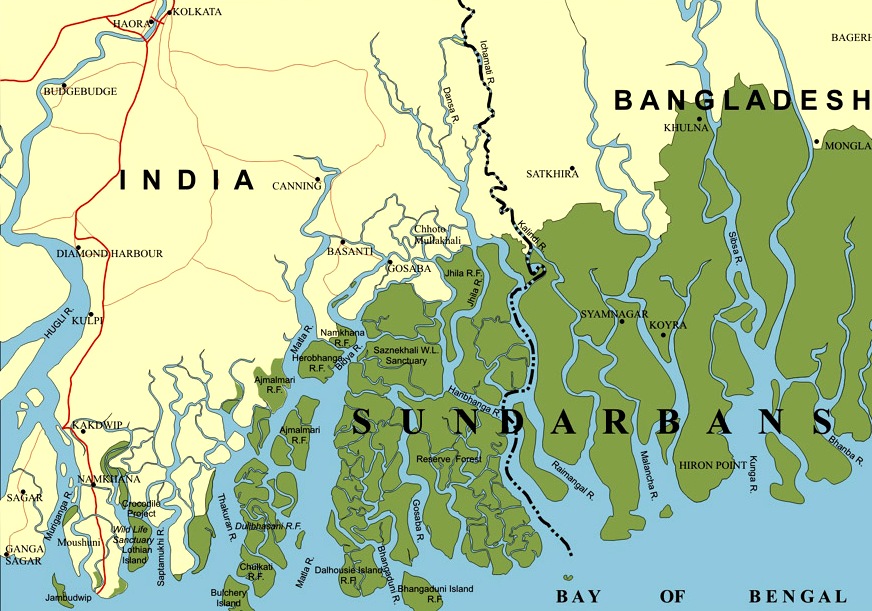Here's a video to open our class discussion.
Post-Colonialism and the Environment
Monday, February 23, 2015
Sunday, February 22, 2015
Things to Consider
Here are some questions and observations to consider for our class discussion.
- In an interview with Readers Voice, Ghosh claims that “one of the major characters in the book, actually, is the landscape in which it’s set.” Did you feel this? And if so, how did it inform your overall reading?
- What issues of postcolonial environment does this text seem to want to engage with? What environmental themes does Ghosh seem to care about? For our purposes in this class, should we care about them, too?
- It’s been duly noted by many critics that, of the novel’s central characters, none of them are native to the Sundarbans. What effect does focusing on diasporic characters achieve? And is it easier to accept and process their relationship to the region, given their various claims to Indian identity, than it would be, say, to digest a western white scientist’s presence?
- What do you make of the tiger scene?
- How are the two storylines working together in the novel? While the forced eviction of Morichjhapi is certainly a horrible and under-remembered event, why focus on it in this otherwise pleasant story of identity and desire and mangroves and river dolphins? Do the storylines feel set in opposition, and if not, why not? What are we to do with Kusum’s lament: “Who are these people [...] who love animals so much that they are willing to kill us for them?” Surely, we are not implicated, are we?
- Ghosh, whose doctoral training is as a social anthropologist, has referred to the novel, as a form, as one of the “other forms of knowing.” That sure is strange, is it not?
- What are the two waves of ecocriticism? How do they differ from each other?
- What is the difference between environmentalism and ecocriticism? How is this important when taking an eco-critical approach to a work?
- How colonial is environmentalism? Is it really just a form of neo-imperialism?
- How do environmentalist ideas such as Deep Ecology affect how we interpret literature? Do solutions to environmentalist problems, such as ecotourism, really fix the problem between environmentalist concerns vs local needs?
- What are some of the short comings of ecocriticism? How much of this is attributed to the intellectual origin of the theory?
- How do post-colonialism and ecocriticism interact?
- What are some similarities shared between post-colonial and ecocritical approaches to literature?
- What are some problems with ecocriticism when approaching a work with in a post-colonial framework? How much are these problems connected to the history of the field? Are they problems that can be overcome?
Sunday, February 15, 2015
Primary Readings
Hello, post-colonial literature classmates.
Here are the readings that you should come prepared to discuss in class on Monday, February 23. Besides the novel The Hungry Tide, there are essays about the field of ecocriticism. There are also secondary readings posted, and essays about The Hungry Tide posted. We will also post discussion questions later on.
Here are the readings that you should come prepared to discuss in class on Monday, February 23. Besides the novel The Hungry Tide, there are essays about the field of ecocriticism. There are also secondary readings posted, and essays about The Hungry Tide posted. We will also post discussion questions later on.
- The Hungry Tide by Amitav Ghosh
Readings about "The Hungry Tide"
Here are some essays that analyze Amitav Ghosh's The Hungry Tide.
- Huggan, Graham, and Helen Tiffin. Postcolonial Ecocriticism: Literature, Animals, Environment. Routledge, 2009. The section "The Lives (and Deaths) of Tigers" of Chapter 3 "Agency, Sex and Emotion".
Secondary Readings
Here are some secondary readings. These readings are not mandatory; but they will provide some insight into different environmentalism topics. Some of the readings will also provide some background information about environmentalism in India and South Asia.
The Sundarbans
"The largest mangrove forest in the world is a mist-shrouded, river-riddled swamp region of shifting tides, man-eating tigers and off-the-beaten-track adventure. It's surrounded on three sides by two of the most densely populated countries on earth -- India and Bangladesh -- yet it remains remote, inhospitable and largely uninhabited by people. This is truly wild terrain, and chug-chugging along its river channels into its swampy heart of darkness is as thrilling as it is serene." -- Lonely Planet
Subscribe to:
Posts (Atom)
